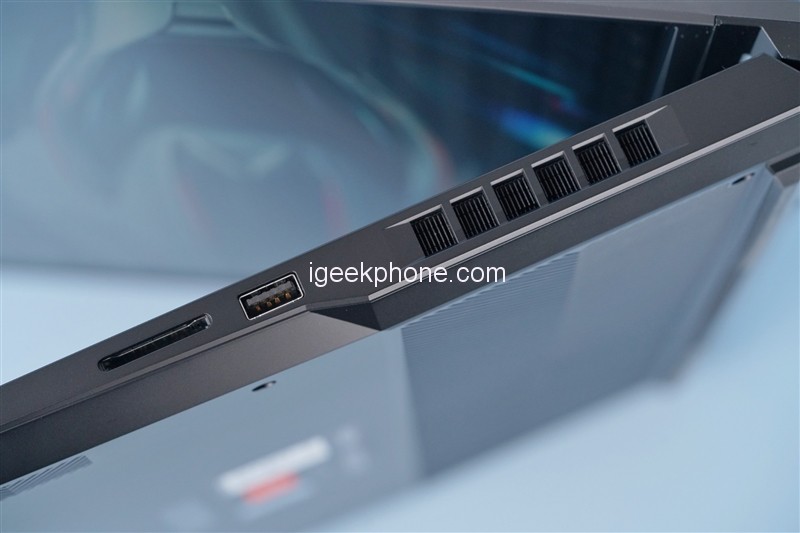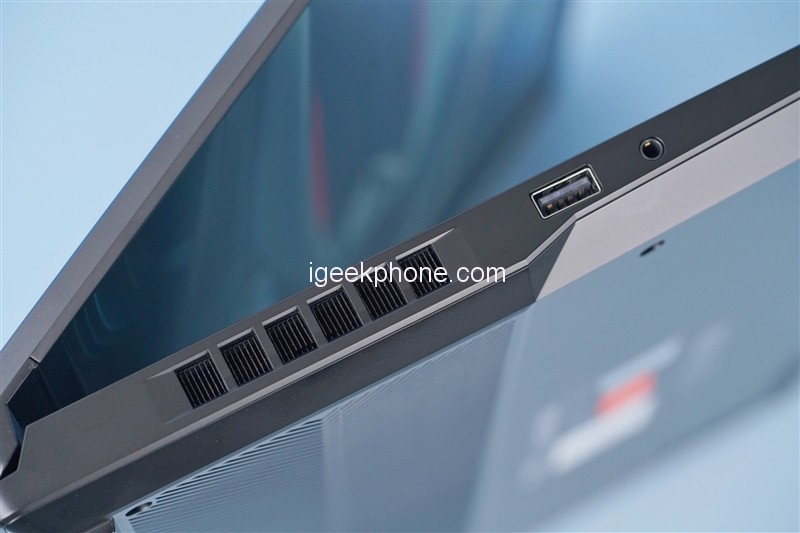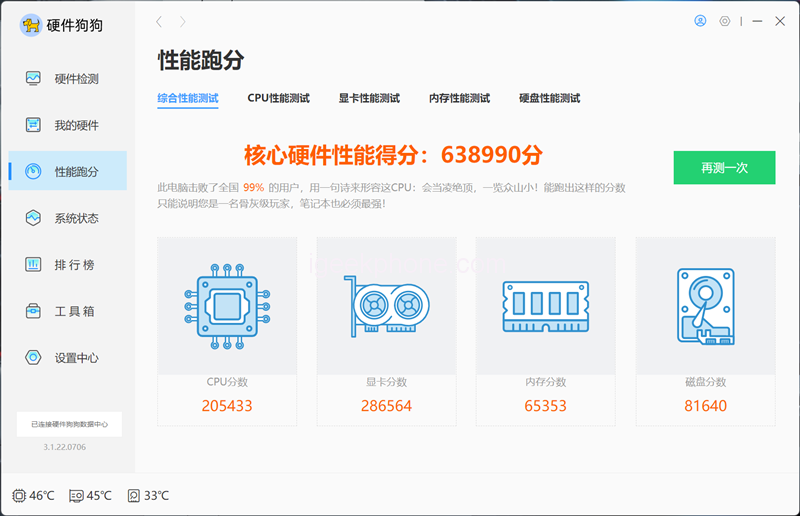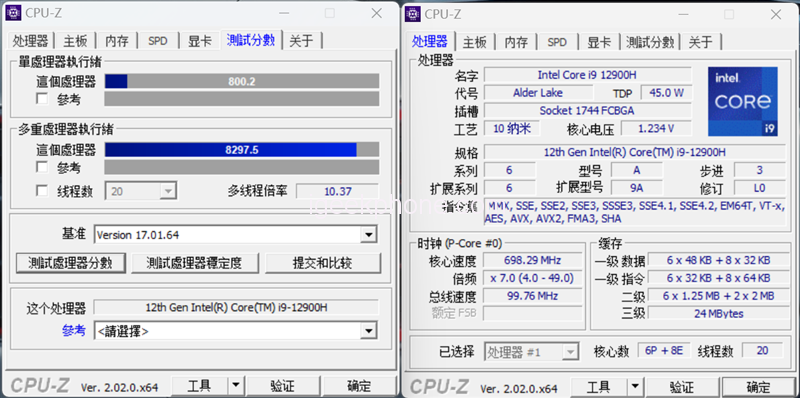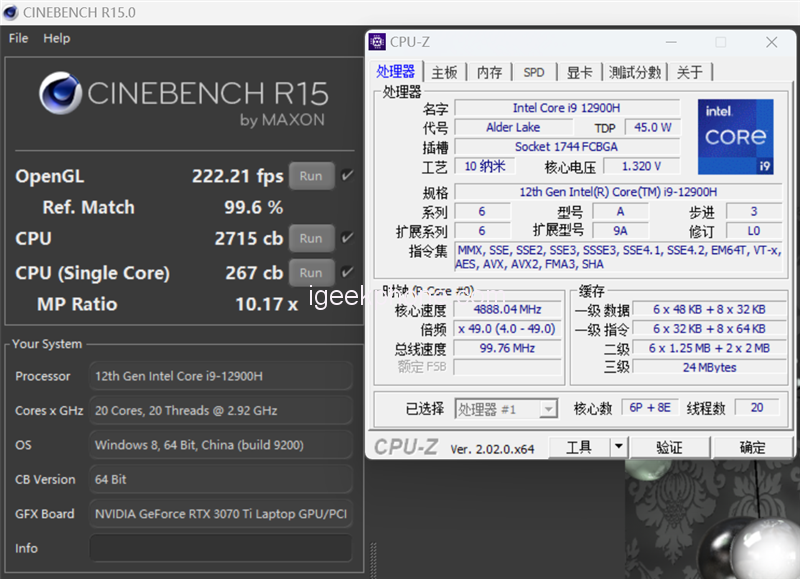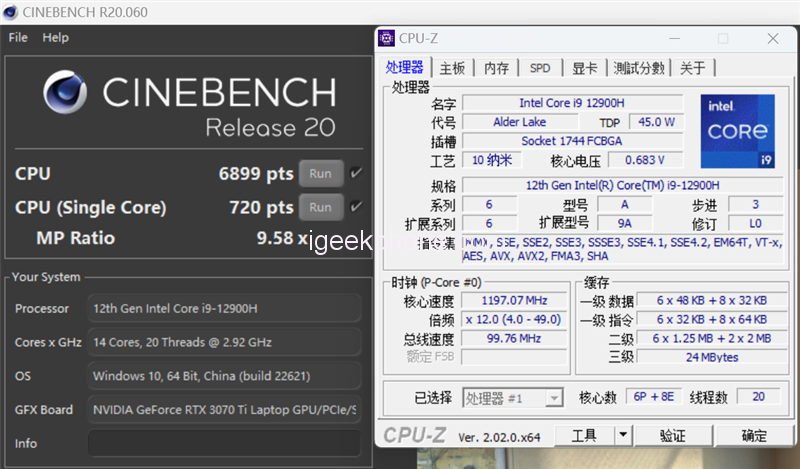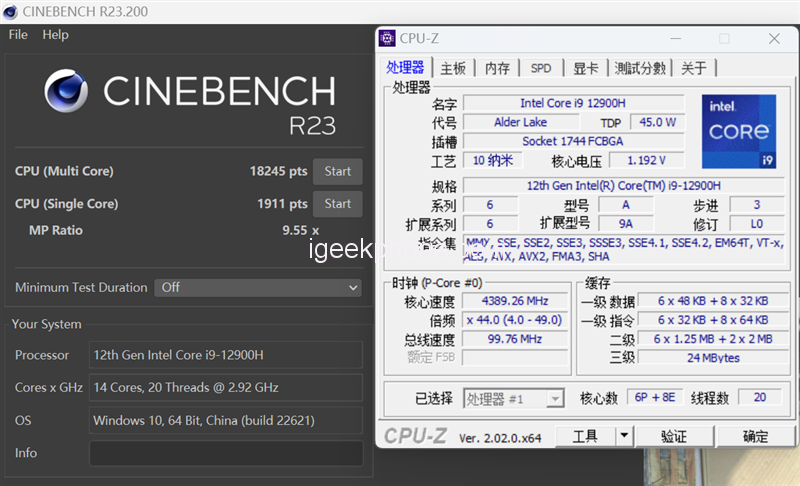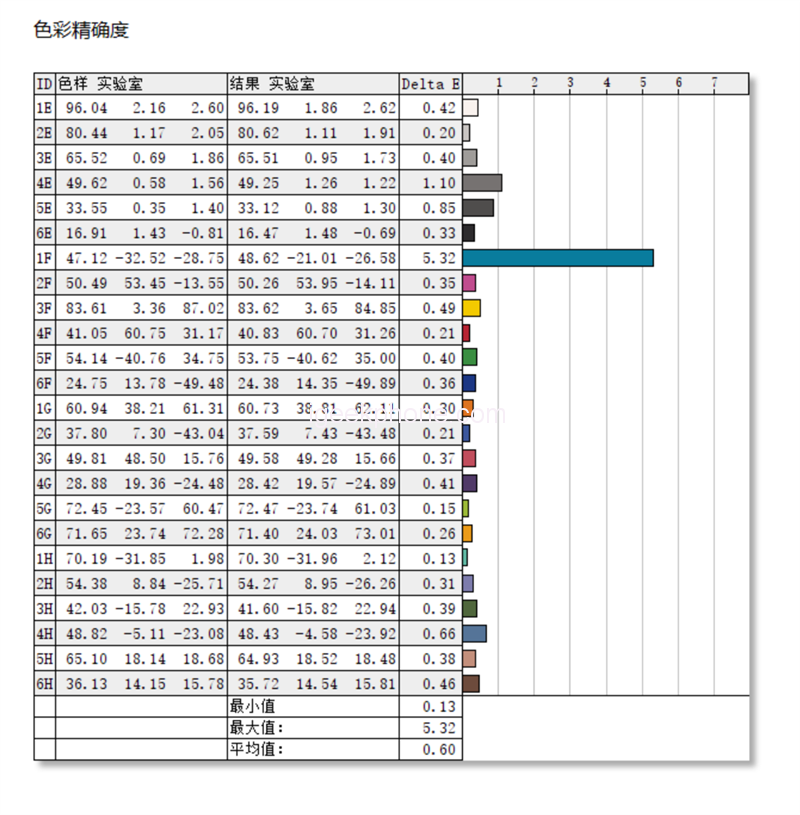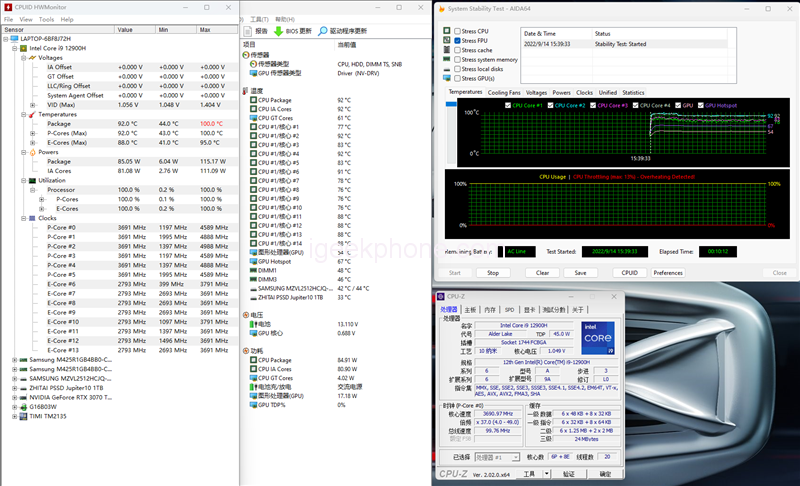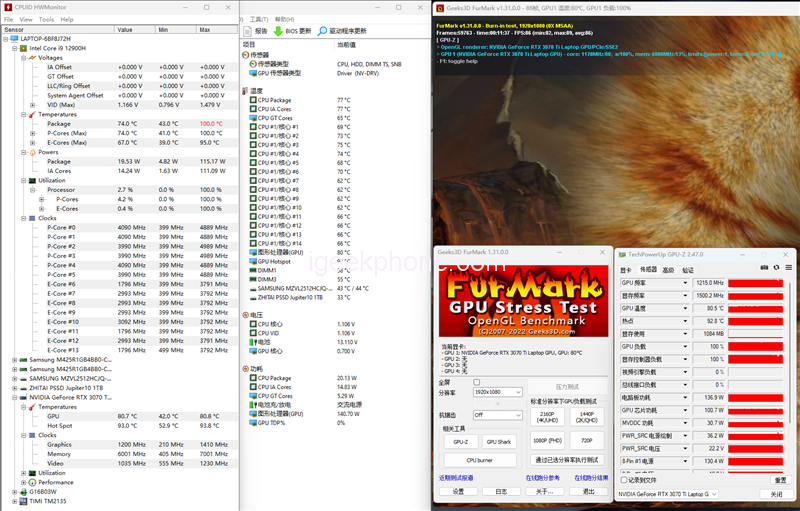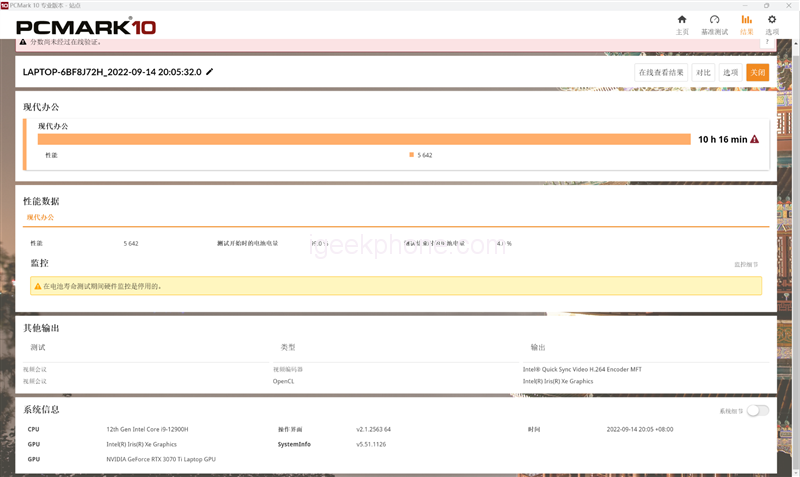In recent years, the Redmi G series gaming notebooks have established a good reputation among players with their impressive performance, design, and excellent price/performance ratio. However, the previous configuration of the Redmi G Gaming Book was not “fever” enough. For example, although the RTX 3060 graphics card was enough for dessert, it could not meet the needs of further games. Many players hope that the Redmi G can be more “Pro”.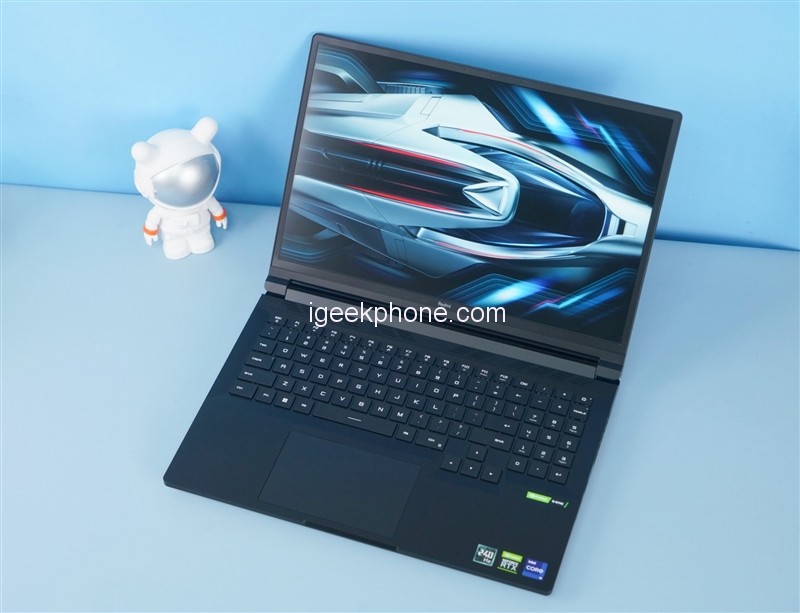
Previously, we reviewed the Redmi G Pro gaming notebook Ruilong Edition. The redesigned appearance, high-standard screen, and violent release performance are comparable to the 10,000-dollar gaming notebook. Now, IGeekphone has received the Core version of the Redmi G Pro gaming notebook. The core configuration is Core i9-12900H+RTX 3070 Ti Laptop. Both the processor and the graphics card are more high-end than the Ryzen version, and the performance is even more violent. lookup.
Before conducting the evaluation, let’s have a general understanding of the configuration and highlights of this Redmi G Pro Gaming Laptop Core Edition:
There is also an air duct design with four air outlets, which can ensure that users can easily suppress the temperature when playing games. The following picture shows the specific parameters of the Core version of the Redmi G Pro gaming notebook we received:
Design & Appearance
Compared with the Ruilong version of the Redmi G Pro gaming notebook, the core version is the same in shape, and there is no obvious difference. It is also the A side of the matte metal material, and there is only a G-shaped logo in the center. The chamfering of the rounded corners make the whole machine look slightly “rounded”. The measurements of the notebook are also 360.5×261.1×28.45mm, but because the processor and GPU configuration are also higher, the weight reaches 2.7kg.
Redmi G Pro Gaming Laptop also uses a 16-inch IPS screen with a resolution of 2560×1600, plus a 240Hz refresh rate and an extremely fast response time that can reach 3ms. It also supports 100% sRGB color gamut, 1200:1 contrast ratio, maximum brightness up to 500 nits, supports global DC dimming, and has passed VESA HDR 400 and TÜV Rheinland hardware low blue light certification.
Combined with support for NVIDIA G-Sync adaptive refresh technology, it can reduce tearing, stuttering, flicker, and distortion in the game screen. The core version of the Redmi G Pro gaming notebook can support a maximum opening and closing angle of 140°, which is basically close to the horizontal angle. When multiple people are watching the screen or in a meeting, the usage scene will be more flexible.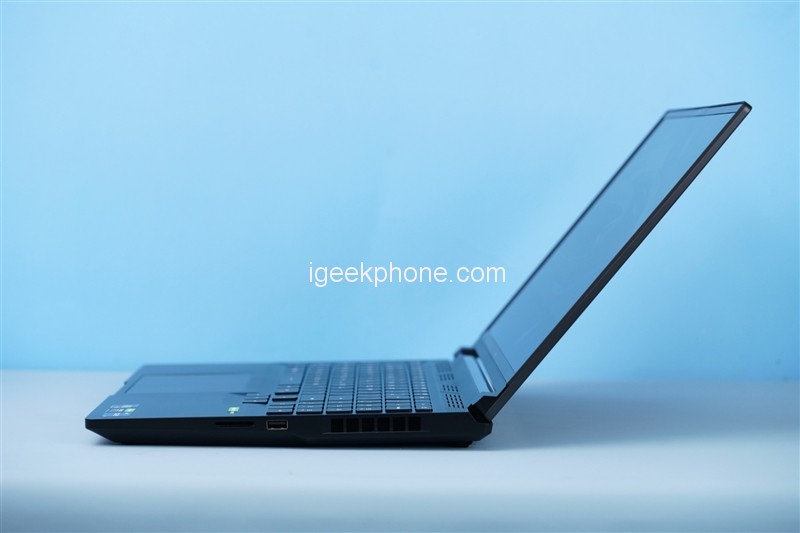
The full-size three-level adjustable white backlit keyboard, with 1.5mm key travel, feels very comfortable, and the feedback given by the keys is also very clear. The 16-inch large screen + independent numeric keypad is more in line with the operating habits of PC users in daily use, and the full-size arrow keys are also well received. The interfaces are mainly placed on the rear of the fuselage, from left to right: power interface, Thunderbolt 4, mini DP1.4, HDMI 2.1, two USB-A 3.2 Gen2, and 2.5Gbps wired network ports.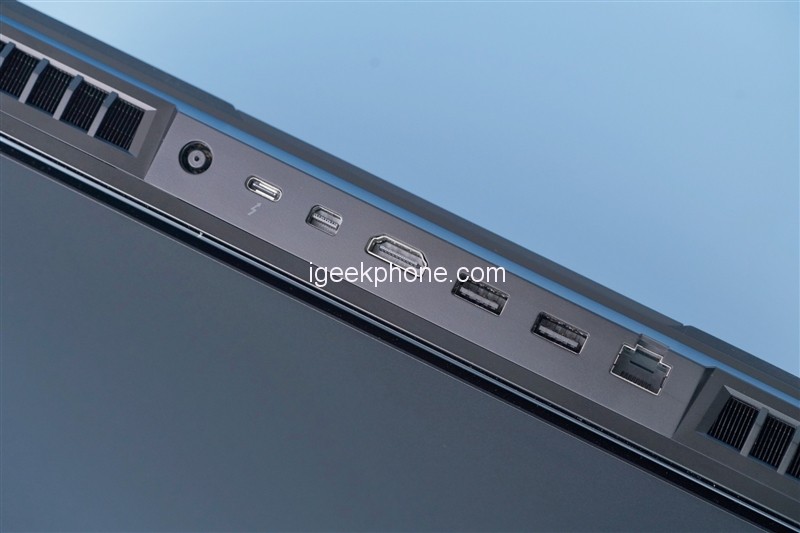
There are also two air outlets on the left and right sides of the rear of the laptop. The Redmi G Pro uses a total of four air outlets to ensure that the performance will not be affected by the overheating of the laptop. The Redmi G Pro uses a total of four air outlets, except for the two at the rear of the laptop, one on each side of the laptop.
In terms of interfaces, the left side of the laptop is a USB-A 2.0 and 3.5mm combo jack, and the right side is a USB-A 3.2 Gen2 and SD high-speed card reader. Half of the D side is open for heat dissipation, and the two sides of the bottom are the speaker placement positions.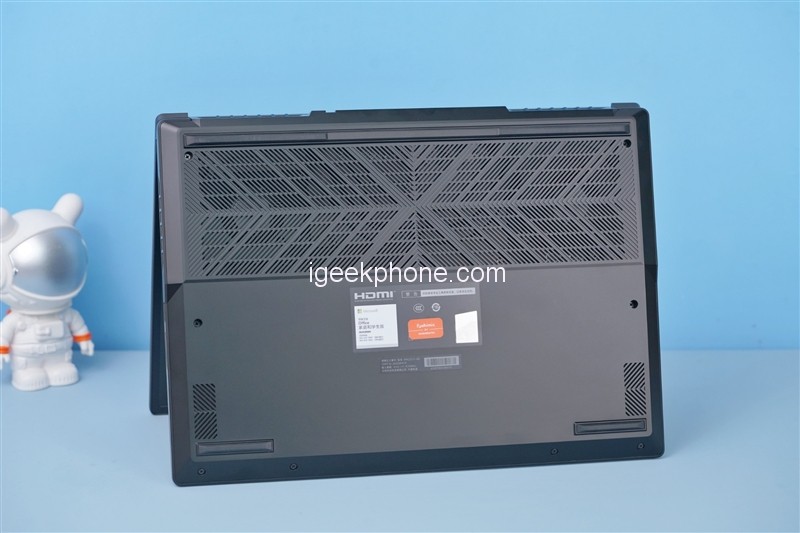
Disassemble the D side, you can see that the overall layout is still very compact. The top is the new hurricane cooling system, and the heat pipe is 1 10mm+2 8mm+1 5mm, which is relatively luxurious among the products of the same level.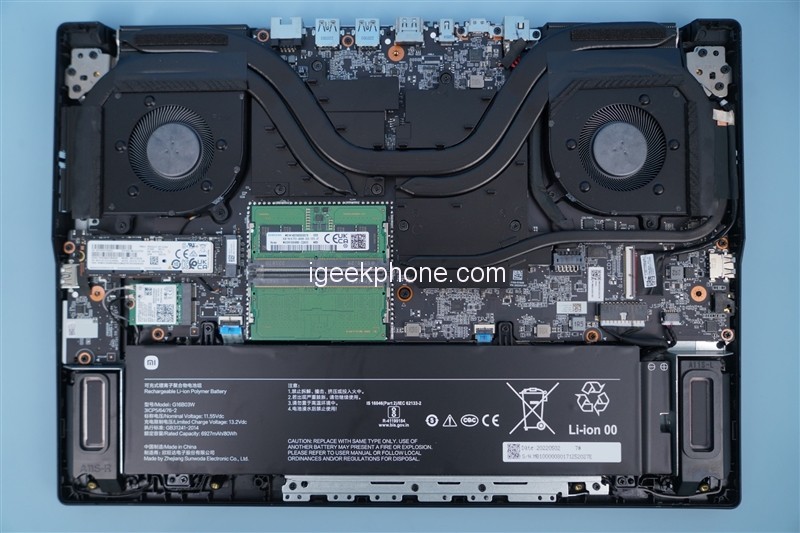
The bottom is the 80Wh lithium polymer battery. On the left and right sides of the bottom are 2W speakers that support the Nahimic sound system. The memory in the middle uses standard SO-DIMM memory, which consists of two 8GB DDR5-4800 16GB dual-channel.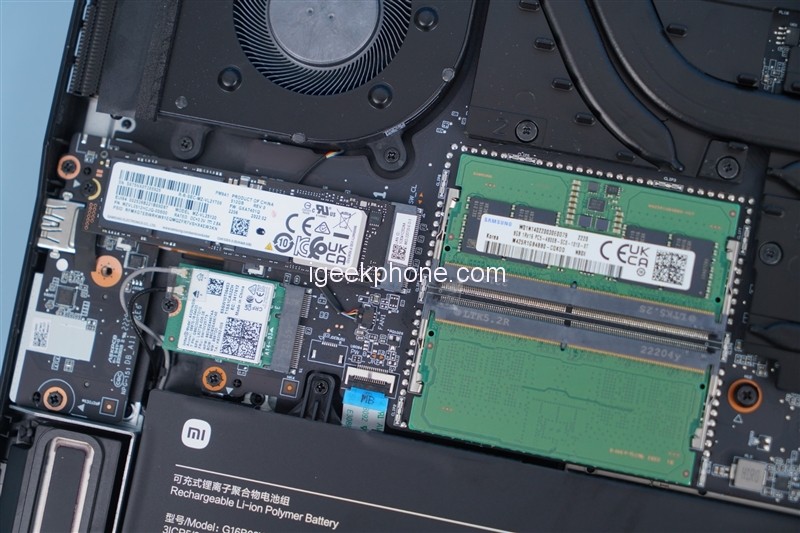
The SSD on the left side of the memory, the model is Samsung PM9A1, the capacity is 512GB, which is the most mainstream SSD at present, and the following is the M.2 wireless network card. Unfortunately, there is only one NVMe M.2 SSD slot. The memory comes with a metal shield, and the NVMe M.2 SSD has a thermal pad, which is removed for taking pictures.
Hardware
The Core i9-12900HX is the top mobile processor on the market, let’s take a look at the benchmark performance first. For the following CPU benchmark tests, all turn on “Best Performance” in the power plan and change the performance mode to “Desperate Mode” in Xiaomi G Command Center.
Hardware dog
Hardware Dog is a professional hardware detection and benchmarking tool produced by Drivehome, which is very suitable for mainstream PC players. Relying on the self-developed algorithm of Fast Technology and authoritative test modules such as 3DMark, it can quickly, accurately, and comprehensively detect the overall configuration of the device, conduct individual and comprehensive tests on the CPU processor, GPU graphics card, memory, and hard disk, and examine the performance of the whole machine. And through the global performance rankings, you can know the performance level of your equipment as soon as you measure it.
The total score given by the hardware dog is 638990 points, surpassing 99% of the national notebook users. The Core i9-12900H score is 205433, the RTX 3070 Ti graphics card score is 286564, the memory score is 65353, and the hard drive score is 81640. The evaluation given by the hardware dog is that the Redmi G Pro gaming notebook Core Edition is the strongest among notebooks, which is very suitable for hardcore players.
CPU-Z
In the CPU-Z score test, the 12900H scored 800 for single thread and 8297.5 for multi-thread.
CINEBENCH
In the CineBench R15 test, the 12900H scored 267 in single thread and 2715 in multithreading. In the CineBench R20 test, the single-threaded score was 720 and the multi-core score was 6899. In the CineBench R23 test, the single-threaded score was 1911 and the multi-core score was 18245.
International chess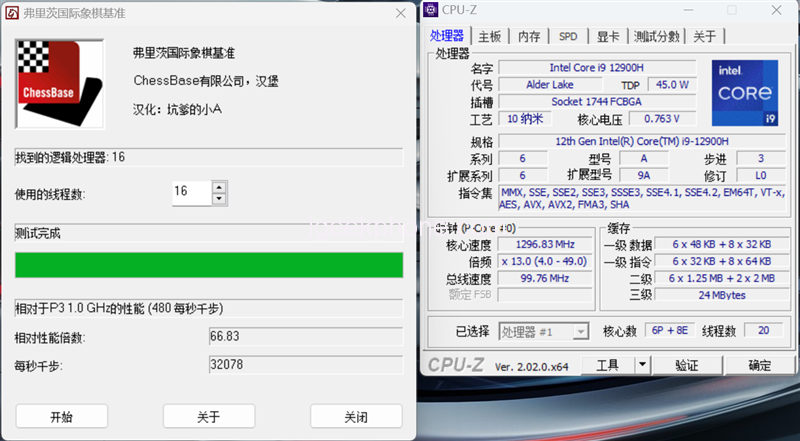
Chess only supports a maximum of 16 threads, and the 12900H ran a relative performance multiple of 66.83, 32,078 thousand steps per second.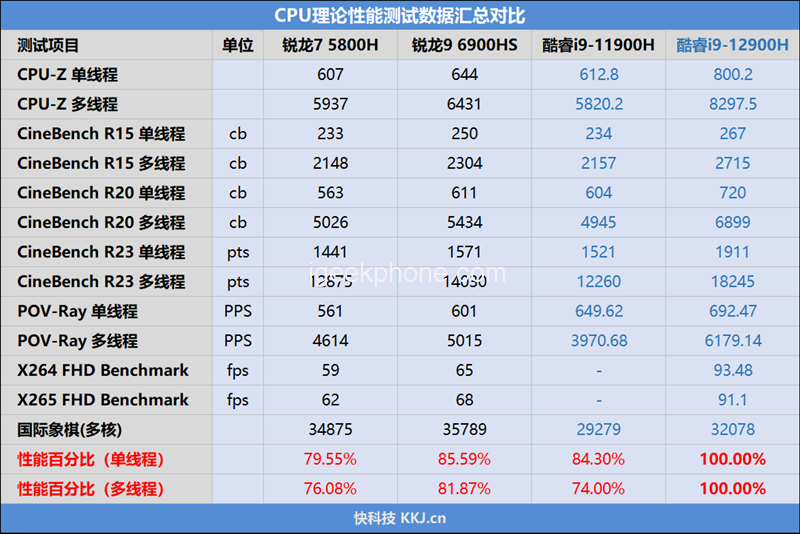
In summary, the i9-12900H on the Core Edition of the Redmi G Pro gaming notebook easily outperforms the previous generation i9-11900H.
The 12900H is 16.8% stronger than the 6900HS (80W) in single-thread performance, and 22.1% stronger in multi-threading. Compared with its previous generation 11900H (90W), it is 18.6% faster in a single thread and 35.1% faster in multi-thread. This result is also better than that of the Ryzen 7 6800H used in the Ryzen version, and the performance of the Ryzen 9 6900HS is basically the same.
Graphics Test
The RTX 3070 Ti Laptop discrete graphics card built into the Core Edition of the Redmi G Pro gaming notebook can be directly connected to the discrete graphics through Xiaomi G Command Center.
The following graphics and game test sections are all tested in the power plan “best performance” + graphics card direct connection mode.
Graphics benchmarks
1. Time Spy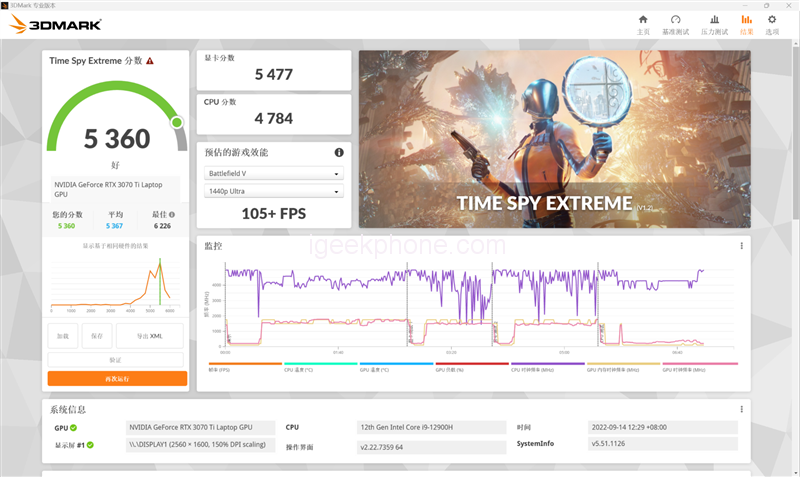
In the Time Spy (2K resolution rendering) project of 3DMark, the total score of the Redmi G Pro gaming notebook Core Edition is 11541, of which the RTX 3070 Ti Laptop has a graphics score of 11215 and a 12900H score of 13007.
2. Time Spy Extreme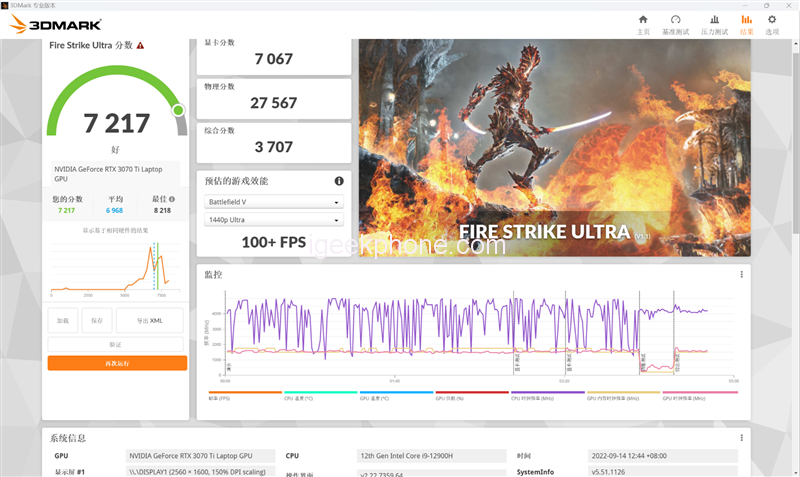
In Time Spy Extreme (4K resolution rendering) the total score is 5360, of which the RTX 3070 Ti Laptop has a graphics score of 5477 and a 12900H score of 4784.
3. Fire Strike Extreme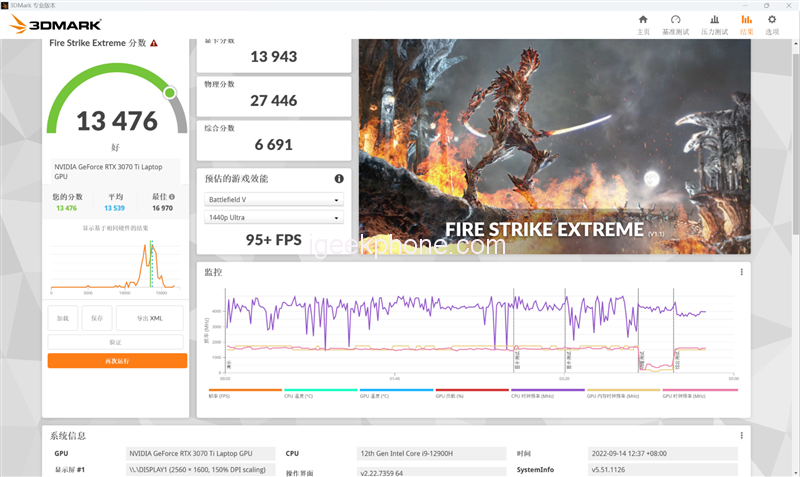
In Fire Strike Extreme (rendering at 2K resolution), the total score was 13,476, of which the graphics score was 13,943 and the physics score was 27,446.
4. Fire Strike Ultra
In Fire Strike Extreme (4K resolution rendering), the total score was 7217, with a graphics score of 7067 and a physics score of 3707.
Game test
Because the RTX 3070 Ti Laptop is positioned as an independent display for high-end games in 2K games, we have made the screen native 2560×1600 resolution below to see the different performances of the following types of games.
1. Borderlands 3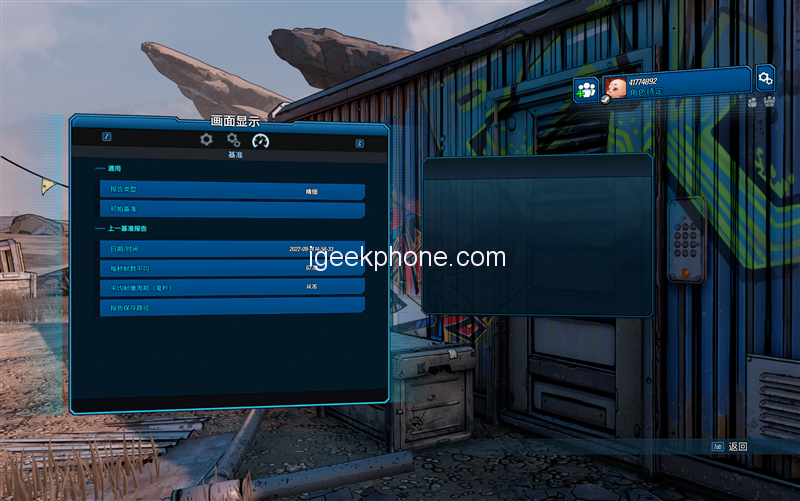
“Borderlands 3” at 2.5K resolution + the highest villain quality, an average frame rate of 67.76 FPS.
2. Crysis 6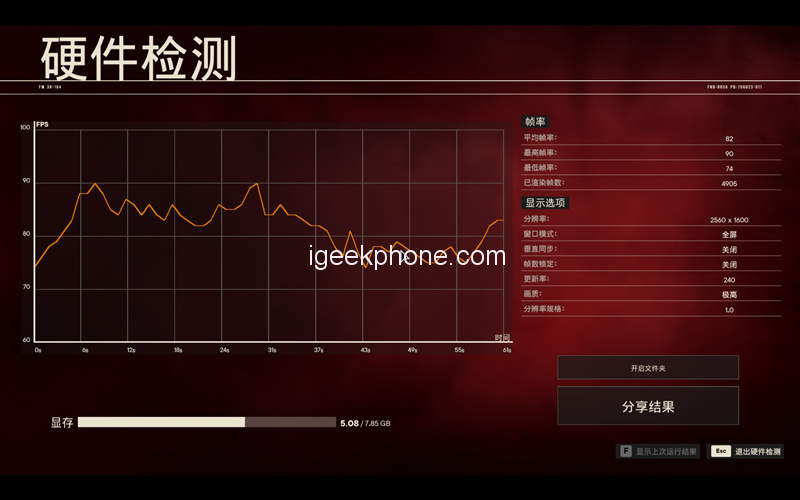
“Crysis 5” has an average frame rate of 82 FPS at 2.5K resolution + extremely high image quality.
3. Assassin’s Creed: Odyssey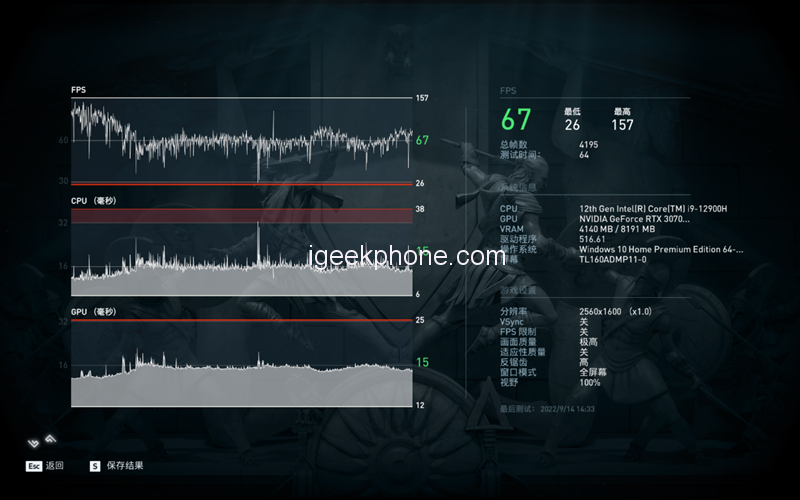
“Assassin’s Creed: Odyssey” at 2.5K resolution + very high quality, an average frame rate of 67 FPS.
4. Horizon: Zero Dawn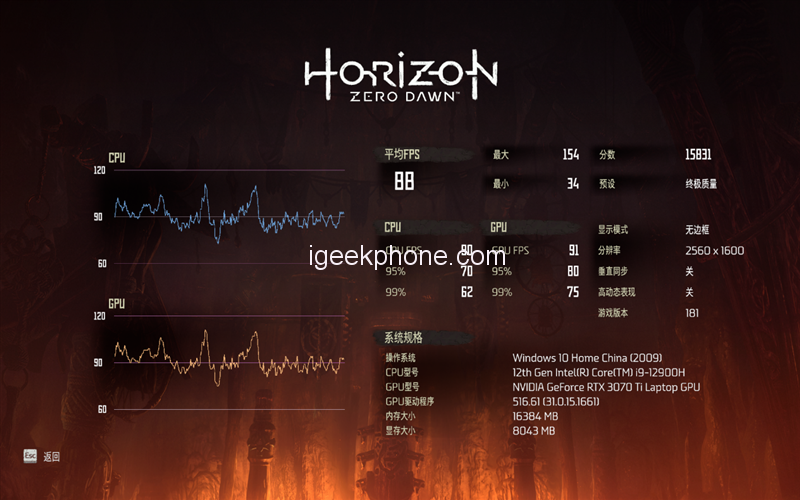
“Horizon: Zero Dawn” has an average frame rate of 88 FPS at 2.5K resolution + ultimate quality.
5. Tomb Raider: Shadow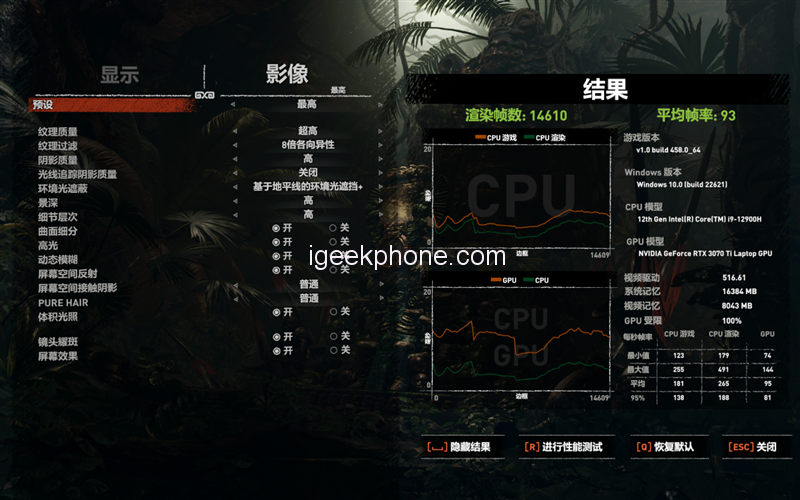
“Shadow of the Tomb Raider” has an average frame rate of 93 FPS at 2.5K resolution + the highest quality picture quality.
5. CS: GO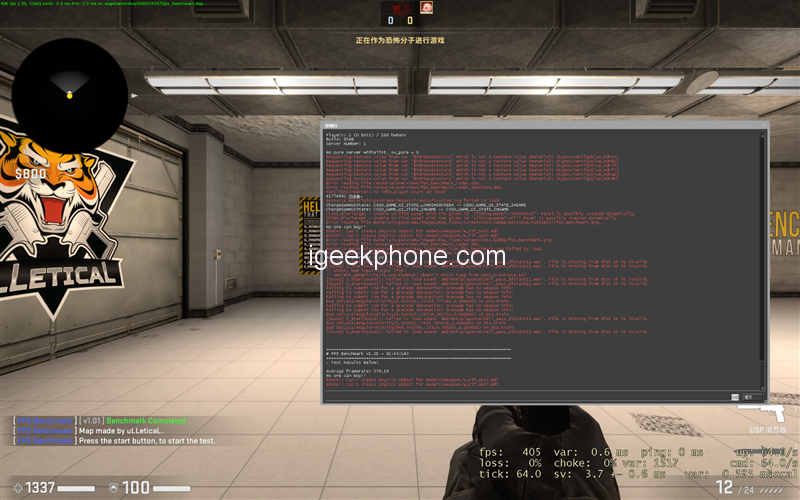
“CS: GO” does not have a quality preset setting, and manually turning on the picture quality to high, the average frame rate results in 378.19 FPS. From the above game performance, the Redmi G Pro gaming notebook Core Edition allows users to enjoy a high-resolution screen with clearer game images at 2.5K resolution and high image quality.
Coupled with the 240Hz screen refresh rate, it can bring users a smoother and faster experience in games, especially high frame rate games like “CS: GO”.
Display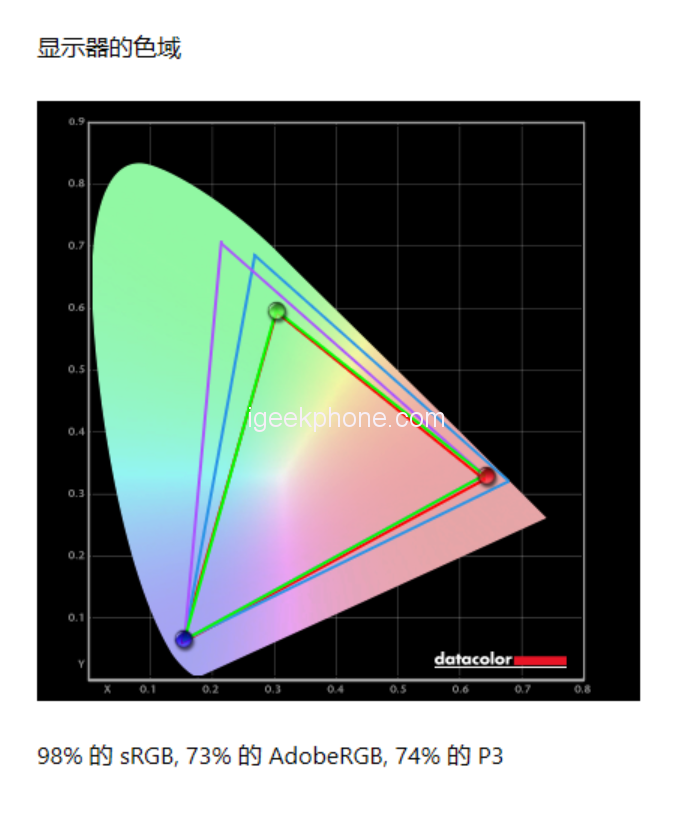
The screen of the Core Edition of the Redmi G Pro Gaming Laptop covers 98% of the sRGB color gamut, 73% of the Adobe RGB color gamut, and 74% of the P3 color gamut, which is an excellent performance.
In SDR mode, the measured maximum brightness is 471.2 nits, and the static contrast ratio is about 1100:1, which is a very standard IPS panel. In particular, the color temperature performance (white point) can provide a more consistent look and feel under different brightness. In terms of color accuracy, the measured Delta-E has a maximum value of 5.32, a minimum value of 0.13, and an average of 0.6.
For the core version of the Redmi G Pro gaming notebook, which is the main game, this screen performance is at an excellent level. Whether users want to play games, watch movies, or edit videos or crop pictures, it can bring more accurate color effects.
Memory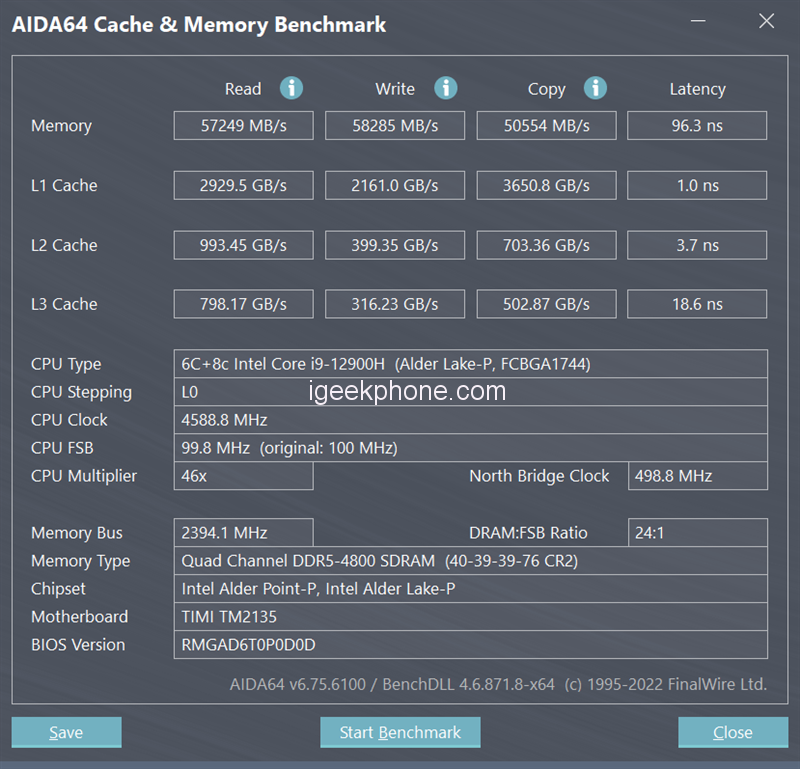
The core version of the Redmi G Pro Gaming Laptop is equipped with SO-DIMM DDR5-4800 memory, which consists of two 8GB memories to form a 16GB dual-channel with a frequency of 40-39-39-76 CR2.
In the AIDA64 memory cache test, the measured read, write, and copy bandwidths are 57249MB/s, 58285MB/s, and 50554MB/s, respectively, and the latency is 96.3ns.
Hard disk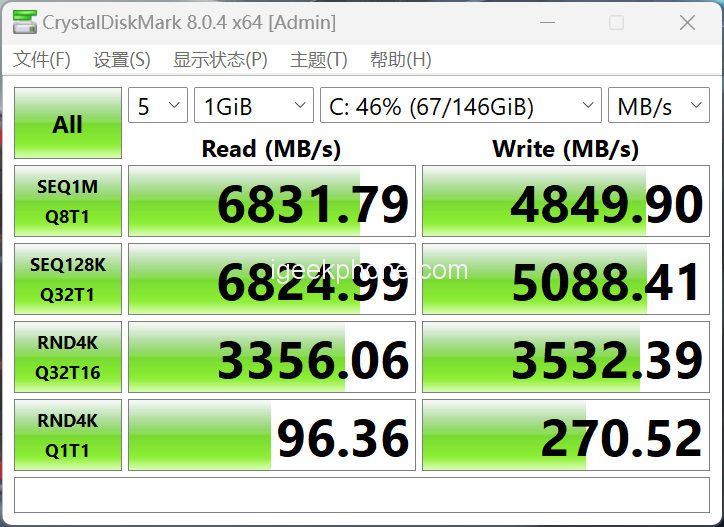
Using CrystalDiskMark to measure PCIe 4.0 SSD, at a continuous speed, read 6832MB/s, write 4850MB/s; 4K random speed, read 96 MB/s, write 271MB/s. This kind of performance belongs to the level that a high-end PCIe 4.0 SSD should have.
Battery
1. Single-bake CPU
We use AIDA64 for the FPU roaster. When the roaster is just started, the turbo power consumption reaches a maximum of 115W. After 10 minutes of baking, the power consumption of the 12900H is stable at about 85W, the CPU core voltage is 1.049V, the temperature fluctuates around 92 degrees Celsius, the P core frequency is 3.9GHz, and the E core frequency is 2.8GHz.
2. Double-bake GPU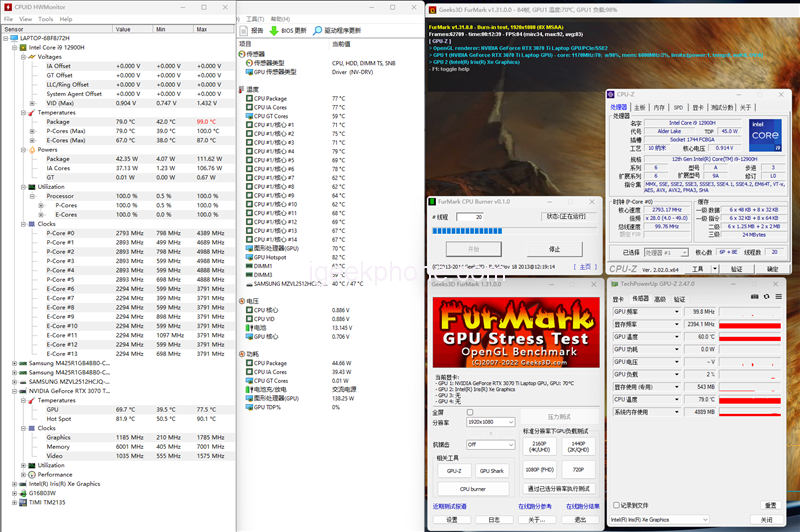
Use “Donut” FurMark for the GPU roasting machine, the resolution is 1920×1080, and anti-aliasing is turned off. After 10 minutes, the power consumption of the RTX 3070 Ti Laptop was stable at 140W, the core temperature was 80.7 degrees, the GPU frequency was 1200MHz, and the maximum frequency during the period could reach 1410MHz.
3. Double roast
On the basis of using FurMark for the RTX 3080 Ti Laptop roaster, we added the CPU burner project to perform CPU+GPU dual roasting. After 10 minutes of baking, the temperature of 12900H is stable at 79 degrees Celsius, the power consumption is 45W, the CPU core voltage is 0.914V, the maximum frequency of P core is 2.9GHz, and the frequency of E core is 2.3GHz.
The temperature of the RTX 3070 Ti Laptop is 82.8 degrees Celsius, and the power consumption fluctuates between 135~138W. At this time, the average frequency of the GPU is 1185MHz.
That is to say, the overall power consumption of the Core version of the Redmi G Pro gaming notebook is around 180W~183W, which is better than the 175W of the Ryzen version.
The Core Edition of the Redmi G Pro gaming notebook has a built-in lithium battery with a capacity of 80Wh. We used PCMark 10 to actually test the battery life of the notebook.
The scene selected for the test is the modern office of PCMark 10, the graphics card is changed to Intel Iris Xe core display, the power mode is “Best Energy Efficiency”, the performance mode of Xiaomi G Command Center is changed to “Quiet Mode”, and the screen brightness is adjusted to 50%. From the 99% battery test to the remaining 4%, the 95% battery gives 10 hours and 16 hours of battery life.
This kind of performance is a very good level in the game book, which is a full 2 and a half hours longer than the Ryzen version, and most of the game books we tested in the past have only about 5 to 7 hours of battery life.
Read Also: Redmi G Pro 2022 Review: Ryzen Edition Beast Gaming Laptop
Verdict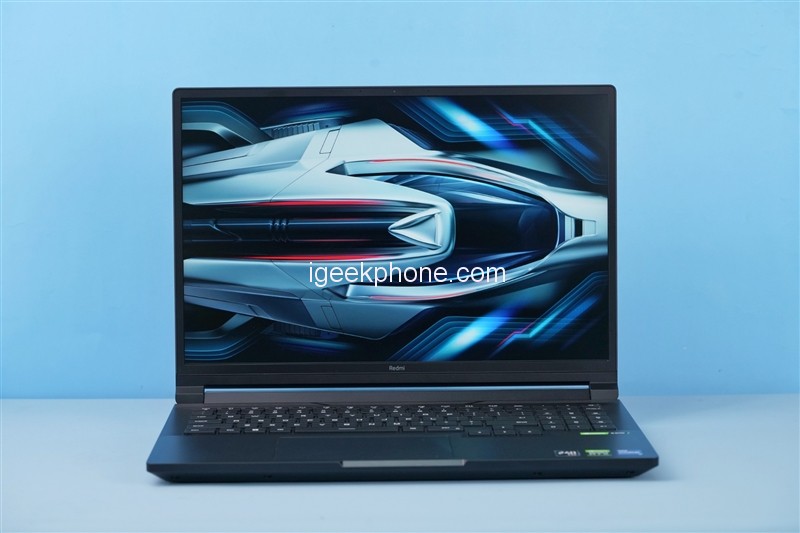
After the experience, it can be clearly felt that this Redmi G Pro gaming notebook Core Edition is undoubtedly a powerful impact of Redmi on high-end gaming notebooks. In all respects, its positioning and performance are “Pro” enough and ashes enough.
The following is a summary of the evaluation:
1. Performance
The combination configuration of Core i9-12900H+RTX 3070 Ti Laptop, in the notebook of 10,000 yuan grade, the performance release is naturally not to be said.
Among them, the stable performance of i9-12900H releases 85W, which is 16.8% stronger than Ryzen 9 6900HS (80W) single-threaded and 22.1% stronger than Ryzen 7 6800H.
Compared with its previous generation 11900H (90W), the single thread is increased by 18.6%, and the multi-thread is 35.1% faster.
With the combination of 12900H and RTX 3070 Ti Laptop graphics card, it is not a problem to open 2.5K resolution + the highest picture quality in the game. The performance of several major 3A masterpieces we tested is higher than 65 FPS, which is a very smooth level.
With the blessing of the 2.5K high score screen and 240Hz high refresh rate, the gaming experience is naturally clearer and more enjoyable than 1080P resolution and low refresh rate.
2. Power consumption and heat dissipation
In the CPU roaster, the power consumption is stable at 85W, and the temperature is controlled at 92 degrees Celsius; the GPU single roast reaches 140W full blood, and the temperature is only 80 degrees Celsius.
The power consumption of the CPU+GPU dual-baking machine can reach up to 183W. While ensuring the full performance of the GPU, the temperature of the CPU is reduced to about 80 degrees Celsius.
This is enough to prove that the Redmi G Pro is equipped with a new hurricane cooling system, so Redmi has enough confidence to shout the slogan of “violent training”.
Although the Redmi brand has always highlighted the price/performance ratio, on the Core Edition of the Redmi G Pro gaming notebook, while the price is lowered, there is no shrinkage or shortcoming in terms of design, power supply, heat dissipation, screen, and other configurations.
With the 16-inch 240Hz high-brush 2.5K IPS screen, the 180W violent performance release of the whole machine, and the new hurricane cooling system, the overall experience is very good, and the overall strength is quite good, comparable to the benchmark of high-end cost-effective gaming notebooks.
The only regret is that there is only one NVMe M.2 SSD slot, which cannot be expanded, especially if you need to save a lot of games, it will be a little nervous. The official price of the Core Edition of the Redmi G Pro gaming notebook is 11,499 yuan, and during the event, JD.com pre-sold it for only 9,999 yuan. In the game book with the same configuration, it is even more cost-effective, and interested players can make a wave.
Do not forget to follow us on our Facebook group and page to keep you always aware of the latest advances, News, Updates, review, and giveaway on smartphones, tablets, gadgets, and more from the technology world of the future.










